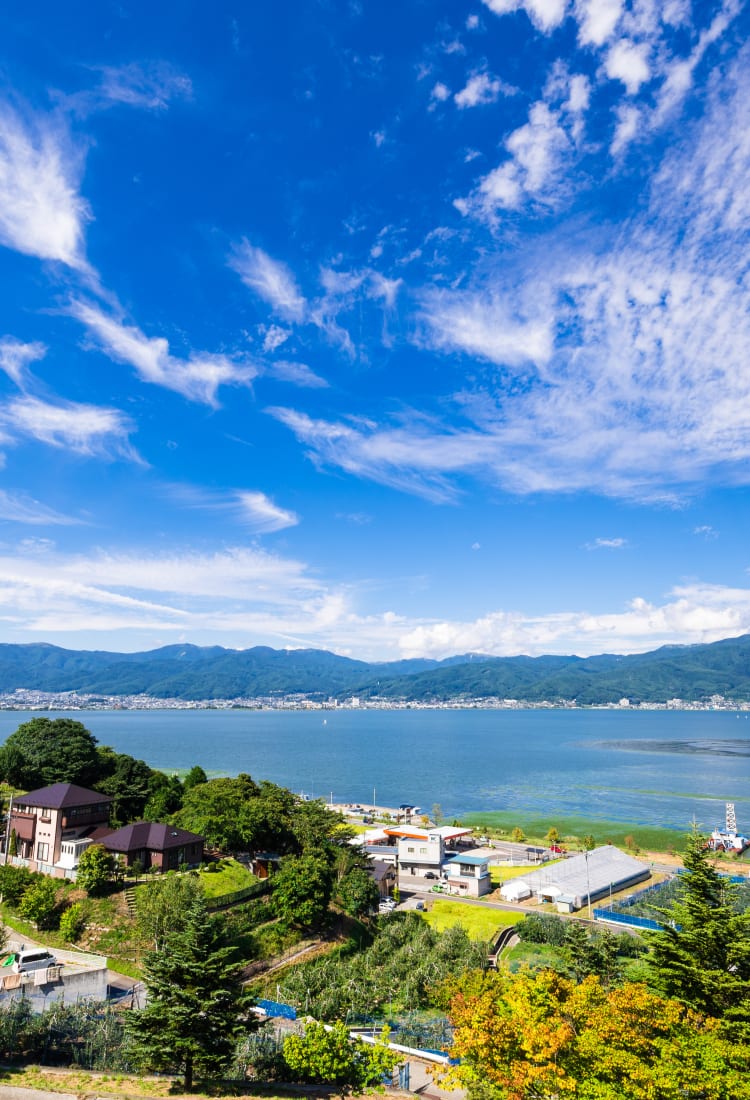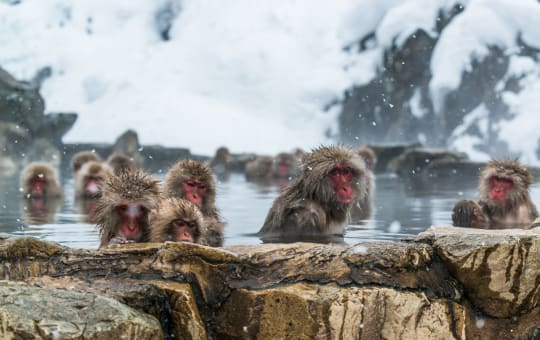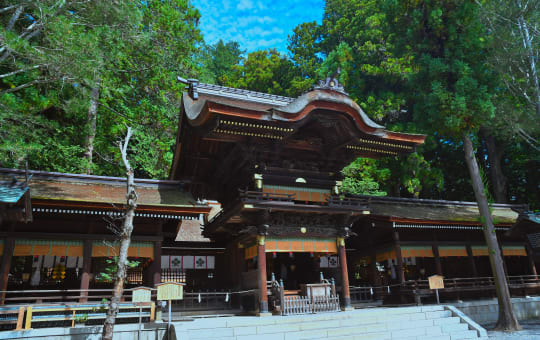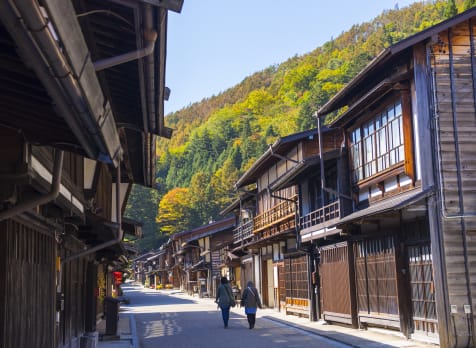Onsen delights, cycling around Lake Suwa, a brewery crawl, and Japan's riskiest festival
Located a little over two hours north of Tokyo, the Suwa region in Nagano offers hot springs, gorgeous natural surroundings, unusual festivals, and a powerful connection to Shinto culture that dates back at least 1,200 years.
The Yatsugatake Mountains present you with plenty of outdoor and backcountry pleasures in all seasons, from trekking and cycling to skiing and snowshoeing. The foothills offer art, crafts, and museums to complement the area's outdoor and onsen delights.
Don't Miss
- Soak up the local spirituality at Suwa-Taisha Shrine
- Enjoy a long, hot soak in one of the area's many onsen
- Explore the volcanic Yatsugatake mountain range
How to Get There
Suwa is easily accessible from both Tokyo and the greater Nagano area by train.
Kami-Suwa Station is the most central and connects to many of the area's major destinations. If you're traveling from the neighboring city of Matsumoto, take the JR Chuo Line (JR East) from Matsumoto Station, which takes a little over 30 minutes.
To get to Suwa Station from Tokyo, catch the JR Azusa train on the Chuo Line Limited Express from Shinjuku Station heading to Matsumoto, and get off at Kami-Suwa Station. This ride will take a little over two and a half hours.
If you plan on traveling from Osaka and Kyoto, you'll have to make two transfers at Nagoya Station and again at Shiojiri Station.
Quick Facts
Lake Suwa is the mountainous Nagano Prefecture's largest lake
Onbashira, the infamous log-riding festival, takes place every six years
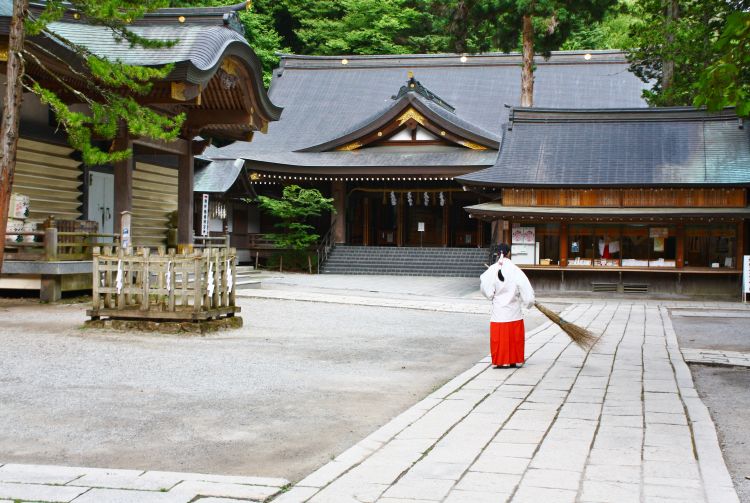
Step into Suwa's mythic past
Suwa-Taisha Shrine is Suwa's spiritual heart. Thought to have been founded in the 6th century, it's one of Japan's oldest shrines and the source of Suwa's own brand of Shinto.
A visit to Suwa-Taisha is like entering the mists of Japan's deep past—its existence was implied in the country's second-oldest book, the Nihon Shoki. Suwa Taisha Shrine consists of four separate shrines, each with their own singular atmosphere.
Get on a bike and explore Lake Suwa
Lake Suwa is at the center of the Suwa region, and there is plenty to do along its shores. A cycling/jogging track runs most of the 16 kilometers around the lake. Rental cycles are available outside of the Suwa area stations, as well as lakeside, near Hotel Beniya. You could also make detours from the lakeside to visit some, or all, of the Suwa Taisha Shrine .
Get caught up in the festive side of Japan
Suwa comes alive with festivals and events throughout the year. Many are seasonal, like the cherry blossom festival at Takashima Castle Park, the taiko festival in Okaya, and Kami-Suwa's biannual Nomiaruki Sake Drink and Walk festival, which is a brewery crawl.
Watch Suwa Lake light up
The Lake Suwa fireworks display in August is among Japan's most lavish displays. Organizers host a follow-up event one month later to show off a newer display of pyrotechnics. In keeping with the festivities, Kami-Suwa holds a lakeside fireworks display virtually every evening from mid-July until September.
The most dangerous festival in Nagano
Suwa's Onbashira Festival takes place every six years in the spring, with the next event in 2022. Participants haul mammoth pillars from the mountains down to the nearby Suwa-Taisha shrines. Onbashira Festival devotees are infamous for riding the pillars all the way down the mountain slope.
Kick back at a Suwa hot spring
Shimo-Suwa has an atmospheric row of bathhouses along the old Nakasendo route between Akimiya Shrine and Harumiya Shrine. Head a kilometer up the hill from Harumiya, and you'll arrive at Dokuzawa Onsen, a stunning bath with rust-hued mineral waters.

Explore the foothills, climb the peaks
The Yatsugatake mountains form the ridge of a long-extinct volcano. Legend says this haughty range caught the ire of the Konohanasakuya-hime, the goddess of Mt Fuji, who knocked it down to its current size. It's a popular area for hiking and trekking, rivaled only by the Nagano Alps.
Many climbers also visit these mountains in winter for backcountry skiing and snowshoeing. If you'd like to stay in the area, consider the more than 30 mountain lodges that these mountains boast.
The Yatsugatake foothills—an onsen and art-filled wonderland
The communities around the Yatsugatake foothills offer hot springs, restaurants and cafes, the shops of local artisans, and occasional craft fairs. The Yatsugatake Museum of Art displays a rotating collection of work by local artisans. The Togariishi Museum of Jomon Archaeology houses priceless artifacts dating back to Suwa's earliest inhabitants.




















































